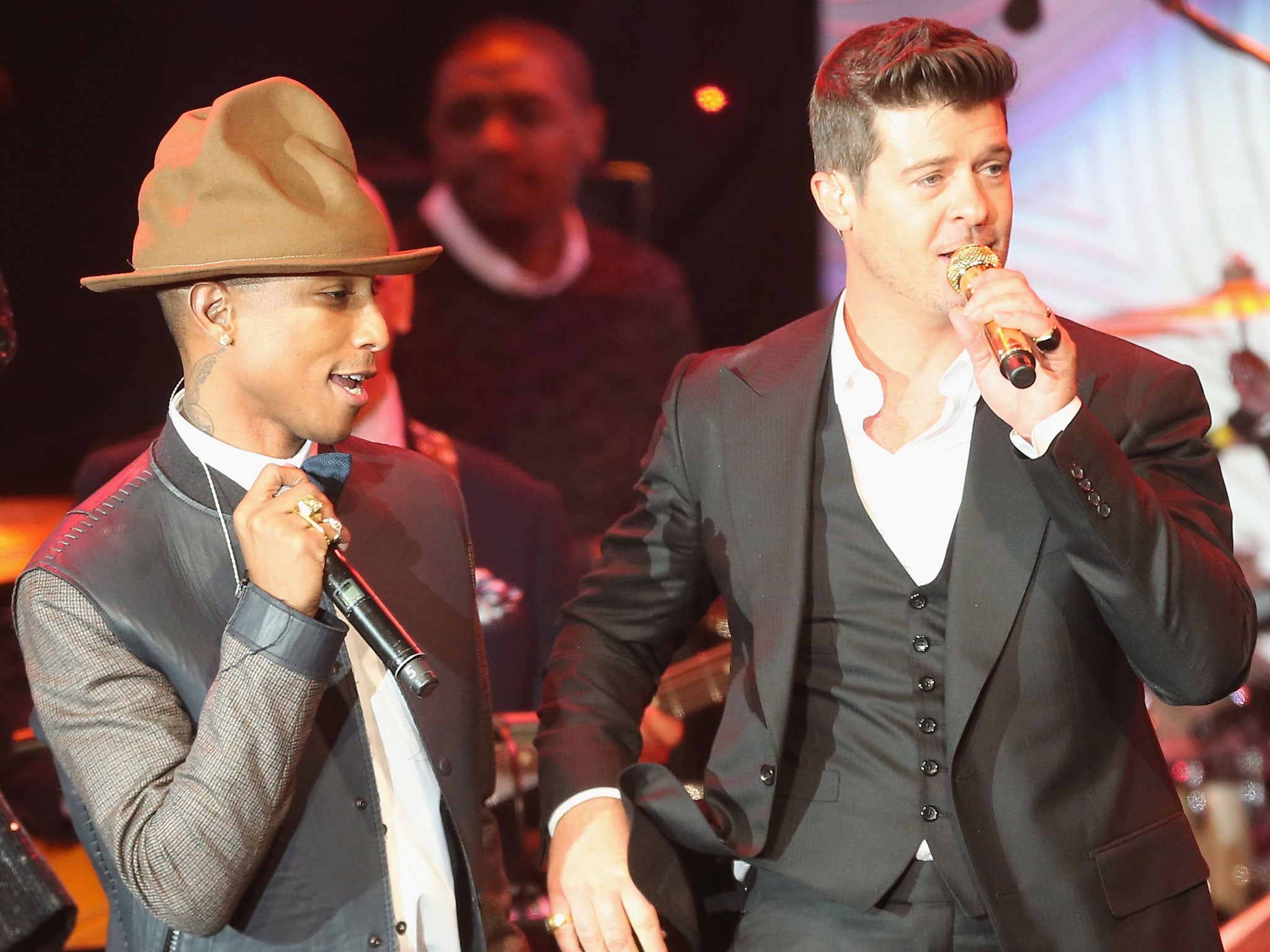Pharrell's understanding of sexism is more than a little blurry
According to the singer, it's possible for men to celebrate the female form in a completely apolitical way

Your support helps us to tell the story
From reproductive rights to climate change to Big Tech, The Independent is on the ground when the story is developing. Whether it's investigating the financials of Elon Musk's pro-Trump PAC or producing our latest documentary, 'The A Word', which shines a light on the American women fighting for reproductive rights, we know how important it is to parse out the facts from the messaging.
At such a critical moment in US history, we need reporters on the ground. Your donation allows us to keep sending journalists to speak to both sides of the story.
The Independent is trusted by Americans across the entire political spectrum. And unlike many other quality news outlets, we choose not to lock Americans out of our reporting and analysis with paywalls. We believe quality journalism should be available to everyone, paid for by those who can afford it.
Your support makes all the difference.Pharrell Williams loves women. He has been telling us so all year: at a recent press conference, he announced the "phenomenal" force of women in his life and work, and his album of last month, G I R L, is a ten-track paean to the fair sex, a lusty celebration, each song a disco-inflected, funk-riffed, light-hearted hymn to desire. But the respectful kind.
Williams is keen to let us know that his own pleasure is not all he’s pursuing: in last week’s new single, ‘Come Get it Bae’, he assures the hot lady of his affections that he will ‘do anything you like/...anything you need.’
There’s a reason for all this. Williams is making amends for ‘Blurred Lines’, the hugely popular Robin Thicke song of 2013 on which he featured.
The song was heavily criticised for its attitude to women. It was described as ‘kind of rapey’ by one commentator, and its video was banned in student unions across the country.
G I R L is Williams' apologia for the misdemeanours of 2013; it is a seductive attempt to woo womankind back into the fold.
But what really caught my attention about the whole campaign was an unexpected cultural parallel used by Williams in defence of the profusion of breasts in his music videos.
At a recent press conference, Williams asked gathered journalists: "Is it sexist when you walk around a museum and … the statues have their boobs out?"
Aligning his music videos with museum's artifacts is a clear attempt to claim freedom for himself from interpretations of ‘sexism’. But does it work?
According to Williams, his videos and songs are merely aesthetic, and incapable of carrying other meanings - political, ethical, historical or otherwise. They are apolitical.
Except they are not. And neither are the statues lining the halls of museums (just ask Guerilla Girls). Both clearly convey the role of women at the time they were made, and cannot be separated from this political and social context.
By drawing parallels between his work and the exalted status of the museum (a place of "serious" art), Williams is confusing prestige with immunity from political critique.
We can see this if we have a look at some of these museum boobs. In the paintings from the tomb-chapel of Nebamun, displayed in the British Museum, the wealthy Egyptian official is seen indulging in his worldly wealth and power.
Around the richly-dressed men and women eating and drinking, are several servant-women, some serving, some dancing. Like Emily Ratajkowski three millennia later, all are naked except for a girdle around their hips.
"Sexist" may be an anachronistic term to apply to ancient Egyptian art, but we can certainly say that these images shows us a powerful man using his wealth to buy access to naked female flesh.
So: rich, powerful men paying women to take their clothes off and dance: sound familiar? The video to "Blurred Lines" demonstrates that there is still a economic dynamic of power between clothed men and unclothed women; and that women’s bodies are still vehicles for commerce.
Yet neither the Nebamun paintings nor ‘Blurred Lines’ can be reduced to a single meaning. Rather, they are part of a rich, complex interpretive pattern around each object.
Restricting anything to labels such as "sexist" or "artistic" can only limit this pattern, and reduce the conversation.
Wherever they may be, representations of women’s bodies are various, rich and complex - so let our ways of reading them be that way too.
Join our commenting forum
Join thought-provoking conversations, follow other Independent readers and see their replies
Comments